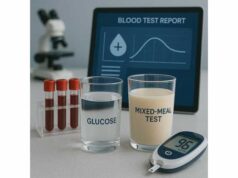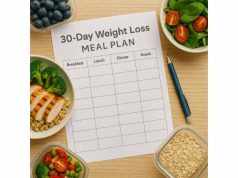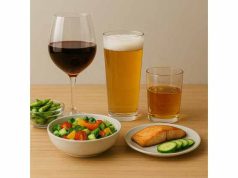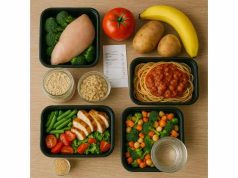
Intermittent fasting (IF) limits when you eat rather than what you eat. Many people like it because it feels simple: shorter eating windows, fewer decisions, and often less hunger. The two most practical versions are 16/8 and 14/10. Both can help you lose fat when they make a calorie deficit easier and keep protein high. This guide explains how IF works, how to choose a schedule, and what to eat in your window. If you want help dialing in calories and macros before you start, review our concise calories, macros and meal planning guide.
Table of Contents
- Intermittent fasting for weight loss
- 16/8 and 14/10 explained
- Calories, macros and timing
- Sample schedules and meals
- IF mistakes and plateaus
- Risks and who should avoid
- Results, evidence and timelines
- Frequently Asked Questions
Intermittent fasting for weight loss
Intermittent fasting is a way to structure your day so that you spend longer periods not eating and shorter periods eating. The goal is not starvation. The goal is clear boundaries that make sticking to your calorie target easier while preserving energy for work, training, and family life. Many people report lower appetite and fewer cravings simply because there are fewer opportunities to snack.
How IF helps fat loss
- Automatic calorie control. Fewer eating occasions can lower total intake without heavy counting, especially if you anchor every meal with protein and high-volume vegetables.
- Appetite rhythms. Longer gaps between meals can reduce “grazing” and blunt late-night snacking, a common source of hidden calories.
- Simplicity. One eating window. One plan. Less choice fatigue means better adherence.
What IF does not do
- It does not override energy balance. Weight loss still depends on consuming fewer calories than you burn.
- It does not require extreme restriction. You can include enjoyable foods within your window if you meet protein targets and mind portions.
Who tends to do well with IF
- People who dislike early breakfasts or naturally prefer later meals.
- Busy professionals who want fewer food decisions.
- Those who struggle most with evening snacking and social nibbling.
Who may prefer another approach
- People with very high training loads, irregular shifts, or medical conditions that complicate fasting (see the safety section below).
- Anyone who already under-eats protein or calories—compressing intake could make that worse.
Expectations and pace
Early weight drops often reflect water and glycogen changes when you stop snacking late and tighten sodium intake. True fat loss follows with consistent protein, a moderate calorie deficit, and basic movement. If you want a broader context on sustainable approaches, see our safe weight loss basics.
Bottom line
IF is a structure, not a strict identity. If the window helps you hit protein, control calories, and feel good, you will likely lose fat. If it makes you overeat in the window or skip training, adjust the plan—not your goals.
16/8 and 14/10 explained
16/8 means 16 hours fasting and 8 hours eating. 14/10 means 14 hours fasting and 10 hours eating. Both are time-restricted eating (TRE) frameworks, not specific diets. You still need adequate protein and balanced meals; the window simply organizes when you eat them.
How to choose a window
- Start with 14/10 if you are new to IF, highly active, pregnant or breastfeeding (with clinician guidance), or prone to headaches when meals shift. It offers flexibility and still reduces late-night eating for many.
- Move to 16/8 once your routine feels easy and you consistently meet protein targets. The shorter window can make appetite control simpler for some, especially if evenings are your challenge time.
Morning or late window?
- Midday window (e.g., 10 a.m.–6 p.m.). Popular for people who like eating lunch and dinner together and can delay breakfast.
- Late window (e.g., 12 p.m.–8 p.m.). Fits social dinners but can tempt late snacking. Use a defined kitchen cutoff.
- Early window (e.g., 8 a.m.–4 p.m.). Can support sleep and reduce late cravings. Works well if you train earlier in the day.
What “counts” during the fast
- Allowed: water, black coffee, plain tea, zero-calorie electrolytes. Small amounts of sweeteners may be fine for adherence; if appetite surges, test plain beverages.
- Caution: creamers, milk, juice, alcohol, sugary drinks, and “healthy” smoothies break the fast and add calories. If you use pre-workout drinks or BCAAs, track their calories and consider taking them inside the window.
Training on IF
- Strength or intervals in a fasted state feel fine for some and awful for others. If performance dips, shift training into your window or add a small pre-session snack and subtract those calories later.
- Endurance or easy sessions generally work well fasted, as long as hydration and electrolytes are on point.
Hunger management
A 10-minute walk, sparkling water, or coffee often blunts morning hunger. During the window, front-load protein and vegetables; you will feel satisfied sooner and snack less later. For practical strategies that lower hunger between meals, see these brief hunger-reducing steps.
Shift workers and parents
You can rotate windows across the week. Consistency helps, but adherence wins. If schedules vary, keep two go-to windows and alternate as needed.
Reality check
IF works because it makes consistent calorie control easier, not because eating at noon unlocks a special metabolism. Choose the version you can maintain through workdays, weekends, and social events.
Calories, macros and timing
Think of calories as your budget and your eating window as your calendar. The budget sets your pace; the calendar prevents impulse spending.
Step 1: Set calories
A moderate deficit of 300–600 kcal/day suits most adults. Larger bodies or those with a high baseline intake may start near the higher end; smaller or leaner individuals should aim toward the lower end to protect training and mood.
Step 2: Set protein (first)
Target 1.6–2.2 g/kg body weight daily (about 0.7–1.0 g/lb). If you have a high body-fat percentage, base protein on goal weight or an estimate of lean mass. Split protein across your meals within the window to improve satiety and muscle retention.
- 60-kg person: 95–130 g/day
- 75-kg person: 120–165 g/day
- 90-kg person: 145–200 g/day
Step 3: Fill carbs and fats to preference
Once protein is set, divide remaining calories between carbohydrates and fats based on taste, training, and digestion. Many people enjoy higher-protein, moderate-carb, moderate-fat meals in their window because these combinations curb hunger and support workouts.
Example day (1,800 kcal target)
- Protein: 140 g → 560 kcal
- Remaining calories: 1,240 kcal → split among carbs and fats
- Option A: 150 g carbs (600 kcal) + 71 g fat (640 kcal)
- Option B: 100 g carbs (400 kcal) + 93 g fat (840 kcal)
Meal timing inside the window
- Two meals + optional snack works well on 16/8.
- Three meals often fits 14/10.
- Break the fast with protein + produce (e.g., Greek yogurt and berries; eggs, spinach, and feta). End the day with a protein-anchored dinner and measured fats.
Training days vs rest days
- On training days, shift a greater share of your carbs toward the pre- and post-workout meals inside your window.
- On rest days, lean on vegetables, legumes, and lean proteins to keep calories steady.
Electrolytes, fiber, and hydration
- Aim for 25–35 g fiber/day via vegetables, legumes (if they suit digestion), nuts, seeds, and berries.
- Salt food to taste, especially in hot weather or when training.
- Carry a water bottle; many “hunger” signals fade after you drink.
Macro flexibility
You are not chasing perfect numbers. Hit your protein floor, keep calories in range across the week, and let carbs and fats flex with appetite and training. For deeper macro guidance across diet styles, see our breakdown of macro ratios for fat loss.
Sample schedules and meals
Use these plug-and-play examples to see how 16/8 and 14/10 can look in real life. Adjust portions to your calorie target and protein needs.
16/8 (12 p.m.–8 p.m.)
- 12:00 Break-fast: omelet with 3 eggs, mushrooms, spinach, and goat cheese; side salad with olive oil and lemon; sparkling water.
- 3:30 Snack (optional): cottage cheese with sliced cucumber and cherry tomatoes.
- 7:00 Dinner: salmon fillet, roasted broccoli, and potatoes with yogurt-dill sauce.
- 8:00 Kitchen closed: herbal tea or water.
16/8 (10 a.m.–6 p.m.) for early trainers
- 10:00 Break-fast: Greek yogurt parfait with berries, chia, and walnuts.
- 1:30 Lunch: chicken thigh, quinoa, and arugula salad with vinaigrette.
- 5:30 Dinner: turkey burger (no bun), grilled zucchini, and avocado.
14/10 (9 a.m.–7 p.m.)
- 9:00 Break-fast: tofu scramble with peppers and onions; whole-grain toast; fruit.
- 1:00 Lunch: tuna salad wrap with lettuce, tomato, pickles; carrot sticks.
- 6:30 Dinner: stir-fried shrimp, snap peas, and cashews over cauliflower rice.
Vegetarian 14/10
- 10:00 Break-fast: protein smoothie (milk or fortified plant milk, protein powder, spinach, banana, peanut butter).
- 1:30 Lunch: lentil and feta salad with cucumbers, tomatoes, olives, and olive oil.
- 6:00 Dinner: paneer or tempeh curry with green beans; side salad.
Quick meal anchors
- Protein: eggs, fish, poultry, lean meat, Greek yogurt, cottage cheese, tofu, tempeh, seitan.
- Produce: salad greens, broccoli, peppers, zucchini, berries, tomatoes.
- Carbs (as needed): potatoes, rice, quinoa, whole-grain wraps, fruit.
- Fats: olive oil, avocado, nuts, seeds, tahini.
If mornings are hard, prep a few high-protein breakfasts you enjoy and slide one into your first meal time; ideas here: high-protein breakfasts.
Pro tip: End your window with a tidy kitchen. Set out tomorrow’s water bottle and protein plan before you log off for the night.
IF mistakes and plateaus
Most stalls come from familiar culprits. Use this checklist to diagnose and adjust.
1) Overeating in the window
IF is not a free pass to graze for eight hours. Keep protein forward, measure calorie-dense fats (oil, nuts, cheese), and include a large vegetable volume at your first meal to set the tone for the day.
2) Low protein
Skipping breakfast and then eating a light lunch leaves you short on protein and more likely to overeat at dinner. Set a daily protein floor and distribute it: two meals might be 40–60 g each with an optional 20–30 g snack.
3) Liquid calories
Lattes, juices, alcohol, and “healthy” smoothies add up quickly. Track them and, when possible, keep them inside the window with measured portions. Alcohol blunts sleep and recovery; reserve it for rare occasions.
4) Sleep and stress
Short sleep raises hunger hormones and cravings. Protect 7–9 hours, dim screens earlier, and stack a brief evening walk. The impact rivals small macro tweaks.
5) Weekend drift
Two off-plan nights can erase five disciplined days. Keep a minimum window on weekends (even a looser 12/12) and set a simple “two plates, one dessert” rule at social meals.
6) Scale noise
Glycogen, sodium, and hormones sway the scale day to day. Track weekly averages, waist measurements, and how clothes fit. If nothing changes for 3–4 weeks, trim calories by 5–10%, mainly from added fats and treats, while keeping protein steady.
For broader pitfalls that stall progress in any diet, scan these common diet mistakes.
Mindset reminder
One off-plan meal changes nothing. Return to your window at the next meal and continue your routine.
Risks and who should avoid
Intermittent fasting is safe for many adults, but not all. Put health first and tailor the plan to your context.
Who should not start IF without medical guidance
- Diabetes on insulin or sulfonylureas, or GLP-1 medications. Meal timing affects glucose and medication needs. Coordinate changes with your clinician.
- Pregnancy or breastfeeding. Energy and nutrient demands are higher; structured fasting is generally not advised unless your clinician recommends it.
- History of eating disorders or disordered eating. Time rules can trigger symptoms. A flexible plan with professional support is safer.
- Underweight, unexplained weight loss, or recent surgery. Prioritize recovery and adequate energy.
- Chronic migraines, GI disorders, or reactive hypoglycemia. Test cautiously with professional input.
Possible side effects
- Headache, lightheadedness, or fatigue early on—often tied to dehydration, low electrolytes, or too large a calorie drop.
- Irritability or sleep disruption if you push the window too late or consume caffeine close to bedtime.
- Heartburn from oversized meals—solve with slower eating and smaller, protein-centered portions.
How to reduce risks
- Hydrate consistently and salt food to taste; consider an electrolyte mix if you train or sweat heavily. Practical beverage ideas here: hydration strategies.
- Break the fast gently with protein + produce; avoid giant, ultra-rich meals.
- Move windows, not values. If a particular time slot causes headaches or low energy, nudge the window earlier or later rather than abandoning protein targets.
Red flags—pause and seek help
Persistent dizziness, fainting, disordered eating thoughts, or significant mood changes are signals to stop and speak with a professional. Your plan should improve your life, not strain it.
Results, evidence and timelines
What the research suggests
Across months, intermittent fasting and traditional calorie-restricted diets usually produce similar fat loss when calories and protein are matched. The advantage often lies in adherence: for some, fewer eating occasions make staying in a deficit easier. IF can also improve markers like triglycerides and fasting insulin in people with higher baseline risk, especially when weight drops and activity increases.
Realistic timelines
- Weeks 1–2: water and glycogen shifts; energy may dip while you adjust. Dial in hydration, electrolytes, and routine.
- Weeks 3–8: steady fat loss if calories and protein are consistent. Expect 0.5–1.0% of body weight per week on a moderate deficit.
- Months 3+: plateaus happen. Audit intake, raise step count, and maintain protein and training.
Measuring what matters
- Track weekly weight averages, waist circumference, and a simple progress photo every 2–4 weeks under similar lighting.
- Log training performance and sleep. If strength and mood crash, the deficit may be too aggressive or the window too late for you.
Who tends to thrive
- People who over-snack at night or skip breakfast without hunger.
- Those who prefer two larger meals to three small ones.
- Busy professionals who need a simple rule to avoid grazing.
When to pivot
If you consistently overeat in the window, feel drained, or your training suffers, shift to a longer window, adjust meal timing, or use a non-IF approach with the same calories and higher protein. The right plan is the one you can repeat on ordinary days.
Frequently Asked Questions
Does intermittent fasting work without cutting calories?
Yes. IF can reduce calories naturally by limiting eating occasions, but fat loss still requires a calorie deficit over time. If your window leads to the same or higher intake, you will not lose fat. Track a week of meals to check your actual totals.
Which is better for weight loss, 16/8 or 14/10?
Neither is inherently better. 14/10 is easier for beginners and those with higher activity needs. 16/8 can curb snacking for people who prefer two larger meals. Choose the window you can follow through workdays and weekends while meeting protein targets.
What should I eat to break a fast?
Start with protein and produce to blunt hunger and stabilize energy—examples: eggs with vegetables, Greek yogurt and berries, tofu stir-fry, or salmon salad. Add carbs and fats to taste and training needs. Avoid giant, ultra-rich meals that spike calories and cause heartburn.
Can I drink coffee while fasting?
Yes—black coffee or plain tea is fine for most people. Small amounts of low-calorie sweeteners may not affect results, but creamers, milk, and flavored syrups add calories and break the fast. If appetite spikes after sweeteners, try plain beverages instead.
Will intermittent fasting slow my metabolism?
Short fasting windows do not “shut down” metabolism. Chronic very low calorie intake can reduce energy expenditure over time, regardless of meal timing. Protect metabolism by using a moderate deficit, meeting protein needs, lifting weights, staying active, and sleeping well.
Is intermittent fasting safe if I exercise?
Usually, yes. Many train well inside the window or with a small pre-workout snack. If fasted intervals or heavy lifting feel poor, move the session into your eating window or adjust carbs around workouts. Hydration, electrolytes, and protein afterward matter for recovery.
How do I break a weight loss plateau on IF?
Audit calories and protein for a week, measure fats and liquid calories, increase steps, and lift 2–3 times weekly. If there is no change for 3–4 weeks, reduce calories by 5–10% while keeping protein steady. Consistency across the week beats perfection in a day.
References
- Calorie Restriction with or without Time-Restricted Eating in Weight Loss (2022) (RCT)
- Effectiveness of Early Time-Restricted Eating for Weight Loss, Fat Loss, and Cardiometabolic Health in Adults With Obesity: A Randomized Clinical Trial (2022) (RCT)
- Effects of Time-Restricted Eating on Weight Loss and Other Metabolic Parameters in Women and Men With Overweight and Obesity: The TREAT Randomized Clinical Trial (2020) (RCT)
- Metabolic Efficacy of Time-Restricted Eating in Adults: A Systematic Review and Meta-Analysis of Randomized Controlled Trials (2022) (Systematic Review)
- 9. Pharmacologic Approaches to Glycemic Treatment: Standards of Care in Diabetes-2025 (2025) (Guideline)
Disclaimer
This article provides general information for adults and is not a substitute for personalized medical advice, diagnosis, or treatment. Always speak with your healthcare provider before changing your eating pattern—especially if you are pregnant or breastfeeding, have diabetes, take glucose- or blood pressure-lowering medications, or have a history of disordered eating.
Share and follow
If this guide helped you, please share it with someone considering intermittent fasting. To get future articles and practical tools, follow us on the social platform you use most—Facebook, X, or another network you prefer.










